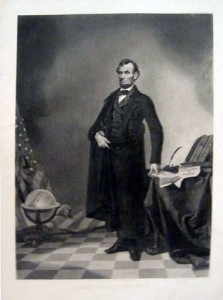So, no sooner did I start getting my act back together on posting than my hard drive went out. So here I sit with my brand-new hard drive, which has a one-year warranty, so I should be set for a while. While I was gone, I read one (November 2015) and two halves (April 1889 and September 2013) of National Geographic issues, so now I just have to recap the one that I’m done with and finish the other two issues and recap them and I’m in business.
We set up a new password for our National Geographic account, so I can continue reading the issues online, rather than having to balance a magazine on my lap while I type. That’ll help me get this done a lot faster. Now on to November 2015, which is the Climate Change issue.
The Will to Change, by Robert Kunzig, photographs by Luca Locatelli
The Will to Change is about what Germans refer to as the energiewende (should that be capitalized or not? It’s a noun, and German nouns are capitalized, but I’m writing in English. Kunzig and his editor opted not to capitalize it, but that seems wrong to me). After the Fukushima power plant disaster, Germany increased its commitment to renewable energy. Angela Merkel promised to close all of Germany’s nuclear reactors by 2022 and she seems on track to do just that. Germans are picking up the slack left by the nuclear power plants with wind farms and what what is known in the United States, at least, as net energy metering. “Net energy metering” is when entities other than the power company generate their own power and sell any excess to the power company. Generally, credits are issued and used to pay back the power company for any power drawn from the grid. I’ve heard of some ambitious individuals who end up owing nothing to the power company and it is even theoretically possible to make a little profit at it.
There is a downside to the energiewende (still sticking with Kunzig’s choice here), however. Since Germany is shutting down their power plants, the needed energy that is not generated by energiewende projects have to come from somewhere. And that “somewhere” is coal-fired plants. The energiewende is driving down the cost of power, so they have priced themselves out of hard coal entirely and are left with lignite coal, the cheapest fossil fuel there is. Lignite coal is dirtier than hard coal, meaning that it produces more carbon dioxide than hard coal.
Hopefully, over time the energiewende will reach a point where the lignite coal can be phased out, but even if it can never be completely weaned from coal, Germany is definitely on its way to a cleaner future.
A Blueprint for a Carbon-Free America, by Craig Welch, graphics by Jason Treat
I’m not overly fond of the term “carbon-free.” Recently, Domino launched “carbon free” sugar, which is, um, well, water, since table sugar is C12H22o11. Take out those 12 carbon atoms and what you have left are twice as many hydrogen atoms as oxygen atoms, which is water. A carbon-free America would be one with no life left in it, since all Earth-based life forms are more or less made from carbon. A lot of dirt is carbon, as well. We’d have some metal left — iron (but not steel, since steel is iron and carbon), calcium (which is what is left over when you take the carbon out of limestone), a lot of sand and other silicon-based things like quartz (but no diamonds because, well, carbon).
I know that’s not what “carbon-free” really means. “Carbon-free” is a shorthand way of expressing the idea of ending carbon dioxide emissions from coal, natural gas, and oil. It’s imprecise, though, and that irks me.
This is just a short little blurb about replacing things that have carbon dioxide emissions with hydroelectric, solar and wind power. The graphs are nice and show, among other things, how much wind could be generated by both onshore and offshore wind farms.
Power to the People, by Michael Edison Hayden, photographs by Rubén Salgado Escudero
Throughout the developing world (India, Uganda, and Myanmar are the examples given here), people are enjoying new freedom through the use of portable solar lights. At the moment, one of the biggest players in the field is a company called Simpa, which charges around $0.35 per day to rent the light. That can be a lot of money for someone who makes only a few dollars a day, but it also, for example, allows shopkeepers to stay open later to get more customers and, thus, more money. And the solar lights are more convenient for the people using them than the old battery-operated lights some had before. When the battery ran down they would have to travel to get a new battery. With the solar lights, when the battery runs down, they just put it in the sun for a few hours, which saves time and wear and tear on their shoes and joints.

